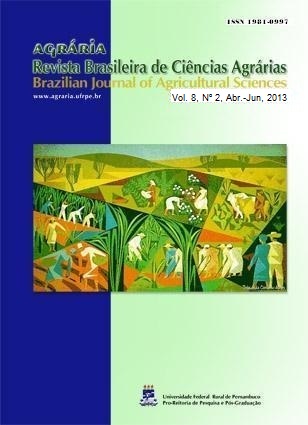Agroforestry Systems in Eastern Amazonia: The case of smallholders of Santa Maria do Pará, Brazil
DOI:
https://doi.org/10.5039/agraria.v8i2a2045Keywords:
family farming, floristic composition, species of interest, managementAbstract
The research aimed to identify and evaluate the commercial multistrata Agroforestry Systems (AFSs) established in Santa Maria do Pará, with an emphasis on floristic composition, the nature of the components, the management, the preferred species for farmers and the main barriers related to the adoption of the AFSs. Data were collected with the aid of structured interviews, direct observation and agricultural calendar, and were analyzed using descriptive statistics and Pearson’s correlation. The floristic composition of AFSs was studied by the diversity index of Shannon-Wiener. The AFSs showed low floristic diversity and consist primarily of fruit species and agricultural short cycle, for marketing and consumption, emphasizing the species Cocos nucifera L., Piper nigrum L., Anacardium occidentale L., Theobroma grandiflorum Willd. and Maninhot esculenta Crantz. The AFSs are managed, generally, with low technological level. The species of interest of farmers are Maninhot esculenta, Passiflora edulis Sims ., Anacardium occidentale, Theobroma grandiflorum Willd. and Piper nigrum L.



